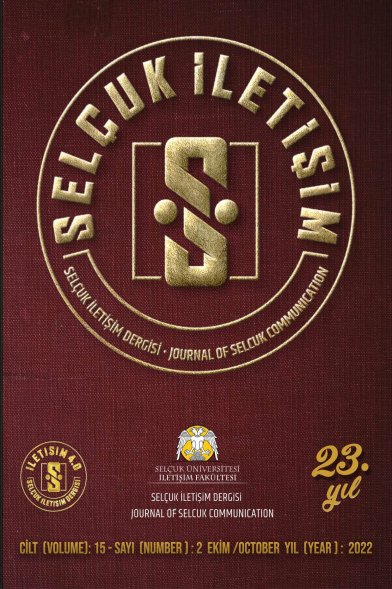Raymond Williams’ın Televizyon Teorisi
Televizyon günümüzün hâkim zevk kültürünü, hayat tarzını biçimleyen ve toplumsal iletişime etkiyen en önemli araçlardan biridir. Belirli alanlara özgü kanalların çoğalması, dijital televizyonun toplumsal algı alanını internetle paylaşmak zorunda kalması dolayısıyla toplumun varoluş tarzını belirleme gücü bakımından televizyonun etkisinin azaldığını söylemek mümkün gözükse de, toplumsal algının ve iletişimin çeşitlenmesi ve parçalanması tecrübe edilmektedir. Fakat bütün bu çeşitlenme ve parçalanmaya rağmen, televizyon görüntülerinin içeriğinin diğer medya araçlarına nispetle daha sürekli ve sıkça tekrar edilerek toplumsal algıya aktarılması önemini koruduğunu göstermektedir. İlk bakışta televizyonun toplumun karmaşık yapısını seyircinin bakışına sunduğu kabul edilse bile, bu durum başka bir sorun oluşturmaktadır. Zira böylece toplumsal hayatın farklı yönleri ve değişik alanları sürekli artan bir oranda medyatikleşmekte ve gerçeklik iletişimsel kodların ve gösterge sistemlerinin medyatik ağına dönüşmektedir. Televizyon, seyirciyi kendine bağlamak için sürekli yeni konular ve gösterim biçimleri peşinde koşarken, yalnızca toplumsal algının yerleşik biçimlerini ve normlarını değil, aynı zamanda kültürel ve etik kabulleri de değiştirmekte, yıkmakta ve dönüştürmektedir. İşte bu yüzden, Raymond Williams gibi teorisyenler, televizyonun gösterim ve anlatım tekniği kadar program içeriklerinin de toplumsal algıya yönelik şuur-dışı etkilerinin olabileceğini ve değerleri dönüştürebileceğini düşünmektedirler.
Raymond Williams' Theory on Television
Television is one of the most important instruments that shape the contemporary dominant culture of taste and the lifestyle and also affect social communication. Although it seems possible to claim that the influence of television has decreased from the point of its power to determine the way of existence of the society due to the facts that those channels peculiar to certain fields have increased and that the digital television is to share the field of social perception with the Internet, the diversification and disintegration of the social perception and communication are being experienced. Nevertheless, in spite of all the diversifications and disintegrations, it seems that the transmission of the content of images on the tv screen to the social perception, by their being repeated more continuously and frequently than the other means of mass media, shows that it still preserves its importance. Although it is accepted at the first glance that television presents the complicated structure of the society to the view of the spectators, this situation forms another problem, for the different aspects and various domains of the social life become subject to the mass media at an ever-increasing rate, and the reality is being transformed into a mediatic network of communicative codes and sign systems. While television continuously seeks for new issues and forms of visual displays in order to draw the interest of spectators to itself, it changes, demolishes and transforms not only the current forms and norms of the social perception but also the cultural and ethical acceptances. It is for this very reason that such theoreticians as Raymond Williams contemplate that not only the projection and narration techniques of television but also the contents of the programs thereof may have unconscious influences on the social perception and transform values.
___
- Althusser L (1968) Für Marx, Suhrkamp, Frankfurt.
- During S (1993) The Cultural Studies Reader, Routledge, London.
- Eco U (1984) Apokalyptiker und Integrierte. Zur kritischen Kritik der Massenkultur, Fischer, Frankfurt.
- Esslin M (2001) Televizyon Çağı, Pınar Yayınları, İstanbul.
- Fiske J (1987) Television Culture, Methuen, London.
- Fiske J (1982) Introduction To Communication Studies, Methuen, London/New York
- Goffman E (2003) Wir alle spielen Theater: Die Selbstdarstellung im Alltag, Piper, München.
- Hall S (1988) The Hard Road to Renewal: Thatcherism and The Crisis of the left, Verso Books, London.
- Hall S (1980) Encoding and Decoding, Stuart
- Hall, Dorothy Hobson, Andrew Lowe and Paul
- Wills (eds), Culture, Media, Language, Hutchinson, London
- Hoggart R (1957) The Uses of Literacy, Penguin, Harmondsworth.
- Mcluhan M (1965) Understanding Media: The Extensions of Man, McGraw-Hill Paperback, New York/London.
- Mellenkamp P (1990) TV time and Catastrophe, or Beyond the Pleasure Principle of television, Patricia Mellencamp (eds), Logics of television: Essays in cultural criticism, Indiana University Pres, Bloomington.
- Goodwin A ve Whannel G (1990) Understanding Television, Routledge, London.
- Williams R (1974) Televsion: Technology and Cultural Form, Fontana, London.
- Williams R (1983) Culture and Society 1780- 1950, Columbia University Press, New York.
- Winkler H (1992) Switching, die Installation der Tagtraummaschine, Hickethier, Knut (eds), Fernsehen. Wahrnehmungswelt, Programminstitution und Marktkonkurrenz. P. Lang, Frankfurt/M.
